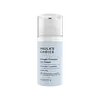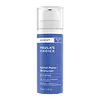What's inside
What's inside
 Key Ingredients
Key Ingredients

 Benefits
Benefits

 Concerns
Concerns

 Ingredients Side-by-side
Ingredients Side-by-side

Water
Skin ConditioningCaprylic/Capric Triglyceride
MaskingButylene Glycol
HumectantNeopentyl Glycol Diheptanoate
EmollientCetyl Palmitate
EmollientNylon-12
Propanediol
SolventAmmonium Acryloyldimethyltaurate/Vp Copolymer
Propylene Glycol Dibenzoate
Skin ConditioningPersea Gratissima Oil
Skin ConditioningBorago Officinalis Seed Oil
EmollientSodium Stearoyl Glutamate
CleansingSqualane
EmollientNiacinamide
SmoothingSalvia Hispanica Seed Oil
MoisturisingLinum Usitatissimum Seed Oil
PerfumingLimnanthes Alba Seed Oil
Skin ConditioningOlea Europaea Fruit Oil
MaskingPassiflora Edulis Seed Oil
EmollientCeramide EOP
Skin ConditioningCeramide NP
Skin ConditioningCeramide AP
Skin ConditioningSodium Hyaluronate
HumectantCholesterol
EmollientMorus Alba Root Extract
BleachingArctostaphylos Uva-Ursi Leaf Extract
Skin ConditioningGlycyrrhiza Glabra Root Extract
BleachingLinoleic Acid
CleansingLinolenic Acid
CleansingSerine
MaskingAlanine
MaskingProline
Skin ConditioningArginine
MaskingThreonine
Phytosphingosine
Skin ConditioningPhytosterols
Skin ConditioningSodium PCA
HumectantGlycine
BufferingOleic Acid
EmollientGlutamic Acid
HumectantLysine Hcl
Skin ConditioningLecithin
EmollientAdenosine
Skin ConditioningSodium Lactate
BufferingHydrogenated Olive Oil
Skin ConditioningEuterpe Oleracea Sterols
Skin ConditioningOlea Europaea Oil Unsaponifiables
Skin ConditioningPhytic Acid
Scutellaria Baicalensis Root Extract
AstringentAnastatica Hierochuntica Extract
AstringentGlycerin
HumectantPCA
HumectantBetaine
HumectantPullulan
Carbomer
Emulsion StabilisingSclerotium Gum
Emulsion StabilisingSodium Citrate
BufferingCitric Acid
BufferingAscorbyl Palmitate
AntioxidantTocopheryl Acetate
AntioxidantSilica
AbrasiveSorbitan Oleate
EmulsifyingXanthan Gum
EmulsifyingSodium Lauroyl Lactylate
EmulsifyingPhenoxyethanol
PreservativeEthylhexylglycerin
Skin ConditioningChlorphenesin
AntimicrobialWater, Caprylic/Capric Triglyceride, Butylene Glycol, Neopentyl Glycol Diheptanoate, Cetyl Palmitate, Nylon-12, Propanediol, Ammonium Acryloyldimethyltaurate/Vp Copolymer, Propylene Glycol Dibenzoate, Persea Gratissima Oil, Borago Officinalis Seed Oil, Sodium Stearoyl Glutamate, Squalane, Niacinamide, Salvia Hispanica Seed Oil, Linum Usitatissimum Seed Oil, Limnanthes Alba Seed Oil, Olea Europaea Fruit Oil, Passiflora Edulis Seed Oil, Ceramide EOP, Ceramide NP, Ceramide AP, Sodium Hyaluronate, Cholesterol, Morus Alba Root Extract, Arctostaphylos Uva-Ursi Leaf Extract, Glycyrrhiza Glabra Root Extract, Linoleic Acid, Linolenic Acid, Serine, Alanine, Proline, Arginine, Threonine, Phytosphingosine, Phytosterols, Sodium PCA, Glycine, Oleic Acid, Glutamic Acid, Lysine Hcl, Lecithin, Adenosine, Sodium Lactate, Hydrogenated Olive Oil, Euterpe Oleracea Sterols, Olea Europaea Oil Unsaponifiables, Phytic Acid, Scutellaria Baicalensis Root Extract, Anastatica Hierochuntica Extract, Glycerin, PCA, Betaine, Pullulan, Carbomer, Sclerotium Gum, Sodium Citrate, Citric Acid, Ascorbyl Palmitate, Tocopheryl Acetate, Silica, Sorbitan Oleate, Xanthan Gum, Sodium Lauroyl Lactylate, Phenoxyethanol, Ethylhexylglycerin, Chlorphenesin
Water
Skin ConditioningDicaprylyl Carbonate
EmollientGlycerin
HumectantEthylhexyl Stearate
EmollientCocoglycerides
EmollientButyrospermum Parkii Butter
Skin ConditioningSqualane
EmollientSodium Polyacrylate
AbsorbentLecithin
EmollientAdenosine
Skin ConditioningPalmitoyl Tripeptide-1
Skin ConditioningCeramide NP
Skin ConditioningRetinol
Skin ConditioningPunica Granatum Extract
AstringentCamellia Oleifera Leaf Extract
AstringentGlycyrrhiza Glabra Root Extract
BleachingTetrahydrodiferuloylmethane
AntioxidantTetrahydrodemethoxydiferuloylmethane
AntioxidantTetrahydrobisdemethoxydiferuloylmethane
AntioxidantTocopheryl Acetate
AntioxidantChamomilla Recutita Flower Extract
MaskingGlycine Soja Seed Extract
Skin ConditioningGlycine Soja Oil
EmollientButylene Glycol
HumectantPropylene Glycol
HumectantGlyceryl Polymethacrylate
Xanthan Gum
EmulsifyingPhenoxyethanol
PreservativeWater, Dicaprylyl Carbonate, Glycerin, Ethylhexyl Stearate, Cocoglycerides, Butyrospermum Parkii Butter, Squalane, Sodium Polyacrylate, Lecithin, Adenosine, Palmitoyl Tripeptide-1, Ceramide NP, Retinol, Punica Granatum Extract, Camellia Oleifera Leaf Extract, Glycyrrhiza Glabra Root Extract, Tetrahydrodiferuloylmethane, Tetrahydrodemethoxydiferuloylmethane, Tetrahydrobisdemethoxydiferuloylmethane, Tocopheryl Acetate, Chamomilla Recutita Flower Extract, Glycine Soja Seed Extract, Glycine Soja Oil, Butylene Glycol, Propylene Glycol, Glyceryl Polymethacrylate, Xanthan Gum, Phenoxyethanol
Ingredients Explained
These ingredients are found in both products.
Ingredients higher up in an ingredient list are typically present in a larger amount.
Adenosine is in every living organism. It is one of four components in nucleic acids that helps store our DNA.
Adenosine has many benefits when used. These benefits include hydrating the skin, smoothing skin, and reducing wrinkles. Once applied, adenosine increases collagen production. It also helps with improving firmness and tissue repair.
Studies have found adenosine may also help with wound healing.
In skincare products, Adenosine is usually derived from yeast.
Learn more about AdenosineButylene Glycol (or BG) is used within cosmetic products for a few different reasons:
Overall, Butylene Glycol is a safe and well-rounded ingredient that works well with other ingredients.
Though this ingredient works well with most skin types, some people with sensitive skin may experience a reaction such as allergic rashes, closed comedones, or itchiness.
Learn more about Butylene GlycolCeramide NP is a type of ceramide and formally known as ceramide 3.
Ceramides are intercellular lipids naturally found in our skin that bonds dead skin cells together to create a barrier. They are known for their ability to hold water and thus are a great ingredient for dry skin.
Ceramides are an important building block for our skin barrier. A stronger barrier helps the skin look more firm and hydrated. By bolstering the skin ceramides act as a barrier against irritating ingredients. This can help with inflammation as well.
If you would like to eat ceramides, sweet potatoes contain a small amount.
Read more about other common types of ceramides here:
Ceramide AP
Ceramide EOP
Glycerin is already naturally found in your skin. It helps moisturize and protect your skin.
A study from 2016 found glycerin to be more effective as a humectant than AHAs and hyaluronic acid.
As a humectant, it helps the skin stay hydrated by pulling moisture to your skin. The low molecular weight of glycerin allows it to pull moisture into the deeper layers of your skin.
Hydrated skin improves your skin barrier; Your skin barrier helps protect against irritants and bacteria.
Glycerin has also been found to have antimicrobial and antiviral properties. Due to these properties, glycerin is often used in wound and burn treatments.
In cosmetics, glycerin is usually derived from plants such as soybean or palm. However, it can also be sourced from animals, such as tallow or animal fat.
This ingredient is organic, colorless, odorless, and non-toxic.
Glycerin is the name for this ingredient in American English. British English uses Glycerol/Glycerine.
Learn more about GlycerinGlycyrrhiza Glabra Root Extract is an extract of the roots of Licorice. It has been found to have several benefits such as skin hydrating, conditioning, and soothing.
One component, glabridin, has extra potent antioxidant and soothing properties. It has also been found to block pigmentation from UVB rays in guinea pigs.
Licorice Root also contains a flavonoid. Flavonoids are a natural substance from in plants. Flavonoids also have antioxidant properties.
Another component, glycyrrhizin, has been found to have anti-inflammatory and antimicrobial benefits. This may make licorice root extract effective at treating acne. However, more research is needed to support this.
Liquiritin is one of the flavone compounds found in licorice. It has been found to help lighten skin by preventing tyrosinase from reacting with tyrosine. When the two react, protein is converted to melanin. Melanin is the substance in your body that gives your features pigmentation.
Learn more about Glycyrrhiza Glabra Root ExtractLecithin is a term for a group of substances found in the cell membranes of plants, animals, and humans. They are made up of mixture of phospholipids.
This ingredient has emollient and emulsifying properties.
As an emollient, lecithen helps soften the skin and creates a barrier to keep moisture in.
As an emulsifier, it also helps prevent water and oil ingredients from separating. Lecithin can also help ingredients be better absorbed by the skin.
This is because the phospholipids in lecithin produce liposomes. Liposomes help other ingredients get through the skin barrier.
Depending on the source of this ingredient, lecithin may not be fungal acne safe. This is because some sources of lecithin come from soybean oil, which may feed the malassezia yeast that feeds fungal acne.
We recommend reaching out to the brand you are purchasing from to inquire about the source of their lecithin.
Some other names for this ingredient include soy lecithin and deoiled soy lecithin.
Learn more about LecithinPhenoxyethanol is a preservative that has germicide, antimicrobial, and aromatic properties. Studies show that phenoxyethanol can prevent microbial growth. By itself, it has a scent that is similar to that of a rose.
It's often used in formulations along with Caprylyl Glycol to preserve the shelf life of products.
Squalane is an emollient that helps the skin hold onto moisture. It's an oily liquid that occurs naturally in certain types of fish and plant oils.
Because squalane boosts hydration in the skin, it also comes with plenty of benefits: it is an antioxidant and can help fight free radicals and skin damage. Squalane is also found to have a detoxifying effect when applied.
Squalane comes from squalene, which occurs naturally within the sebum of our skin. It is one of the oils our skin produces to keep itself hydrated. Squalane is the hydrogenated version of squalene and has a longer shelf life.
Research shows that squalane is non-irritating (even at 100% concentration).
In general, it's a fantastic ingredient. It does a great job at hydrating the skin, and it's suitable for those with sensitive skin.
The source of squalane may impact malassezia / fungal acne. This is because olive oil derived squalane can contain impurities such as fatty acids and plant waxes. Sugarcane derived squalane is recommended for anyone with malassezia concerns.
Is squalane vegan?
This depends on the source. Squalane can be derived from both plants and animals. Most squalane used in skincare comes from plants.
Please note: the source of squalane is only known if disclosed by the brand. We recommend reaching out to the brand if you have any questions about their squalane.
Read more about squalene with an "e".
Is squalane an oil?
Squalane is often called an oil, but it’s technically not; it’s a hydrocarbon, meaning it’s only made of carbon and hydrogen, unlike true oils which are triglycerides made of fatty acids and glycerol.
The term “oil-free” isn’t regulated, so companies can define it however they want. Some exclude all oils, while others just avoid mineral oil or comedogenic oils.
While some people avoid oils thinking they cause breakouts, the right kind of oil (or oil-like ingredient like squalane) can actually help balance and hydrate your skin. It’s worth testing out simple oils or squalane to see what works best for your skin.
Learn more about SqualaneTocopheryl Acetate is AKA Vitamin E. It is an antioxidant and protects your skin from free radicals. Free radicals damage the skin by breaking down collagen.
One study found using Tocopheryl Acetate with Vitamin C decreased the number of sunburned cells.
Tocopheryl Acetate is commonly found in both skincare and dietary supplements.
Learn more about Tocopheryl AcetateWater. It's the most common cosmetic ingredient of all. You'll usually see it at the top of ingredient lists, meaning that it makes up the largest part of the product.
So why is it so popular? Water most often acts as a solvent - this means that it helps dissolve other ingredients into the formulation.
You'll also recognize water as that liquid we all need to stay alive. If you see this, drink a glass of water. Stay hydrated!
Learn more about WaterXanthan gum is used as a stabilizer and thickener within cosmetic products. It helps give products a sticky, thick feeling - preventing them from being too runny.
On the technical side of things, xanthan gum is a polysaccharide - a combination consisting of multiple sugar molecules bonded together.
Xanthan gum is a pretty common and great ingredient. It is a natural, non-toxic, non-irritating ingredient that is also commonly used in food products.
Learn more about Xanthan Gum